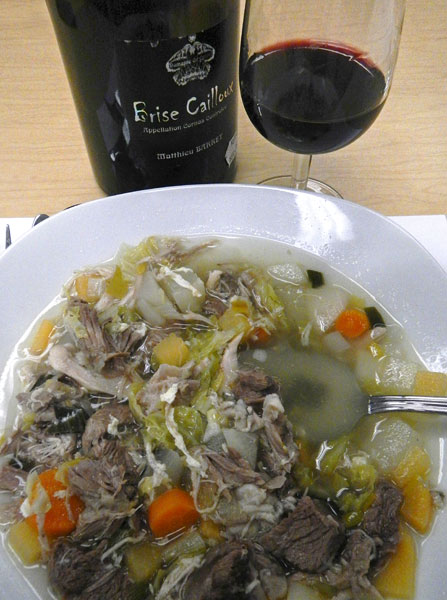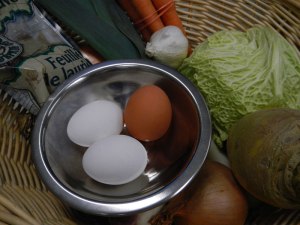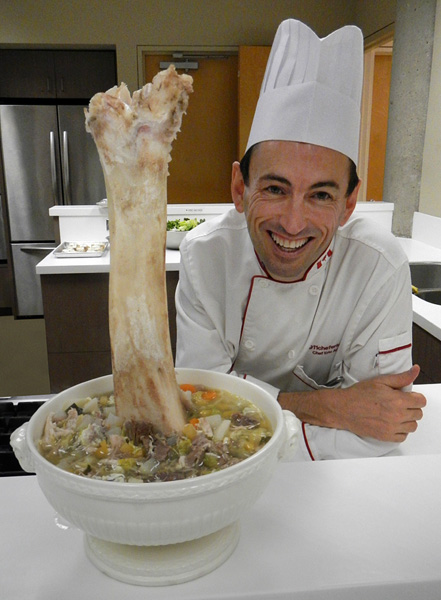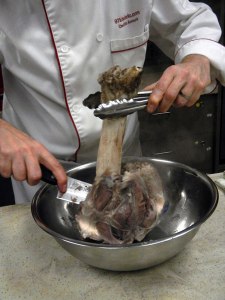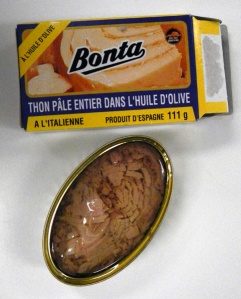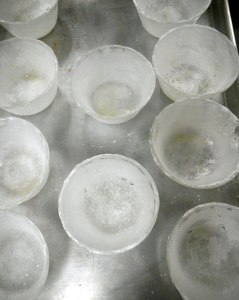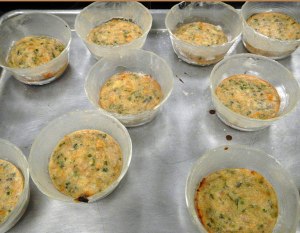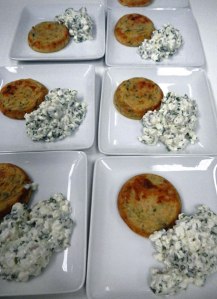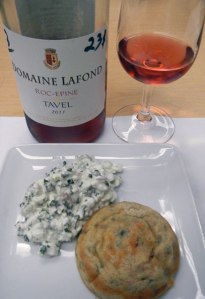I would never have suspected the French to have recipes that contain meat, meat and more meat, but this was the second such ‘meaty’ dish that we have made in our French cooking class. So our third class featuring the food and wine of the Rhone valley started off with ‘Wooden Leg Soup‘.
Wooden Leg Soup
In this soup we have meat (veal shank), meat (pork shoulder), meat (veal shoulder), meat (chicken), meat (beef bone marrow) and meat (1/2 old partridge). I questioned the word ‘old’ in regards to the partridge, and it turns out Chef Eric really did mean ‘old’ as in ‘aged to the point of rotting off the hook it has been hung on’. At least, that’s what they did in France when Chef Eric was a 16 year old apprentice. I suspect Health Canada might have something to say about that tradition.
This soup was a favourite amongst the Lyonnaise nobility in the 18th century as it showed off their wealth – even today to have all that meat in one course of a five course meal requires pretty deep pockets.
the ingredients for wooden leg soup include eggs, Savoy cabbage, leeks, turnips, carrots, rutabaga, onion and garlic along with tons of meat
The name of this soup derives from the traditional way of serving it, with a stripped veal shank bone standing upright in the soup tureen.
With the soup we had a Brise Cailloux Cornas, a wine from the Rhone region, made from 100% Syrah grapes. This was a bone-dry light-bodied red wine, $65 a bottle, expensive, but it probably cost a lot less than that meaty soup. Chef Eric suggested that either a Grey Monk Pinot Noir or a Chilean Red would be cheaper and excellent alternatives.
Critique: the soup was too meaty for me, and I’m not fond of winter vegetables except for onions and leeks, and to top it off, the wine was too dry. BUT I can not deny that it was an interesting experience to be treated as nobility for an evening, and I also now appreciate the delights of being a bit of a peasant!
And so on to Course 2: Tuna Bouchée and ‘Cervelle de Canut’
The ‘Tuna Bouchée’ was a tuna ‘cake’, comparable to a crab cake. Eggs, milk, flour, Swiss Gruyere cheese, herbs and a whole can of tuna in oil were added to a bowl one by one and whisked.
The mixture was then poured into bowls that had been greased and floured, and baked at 400°F for 20 minutes or so.
‘Cervelle de Canut’ means ‘silkworker’s brains’.
No brains were actually used in this dish — it is actually a fresh herbed cheese, usually purchased from a local Lyonnaise fromagerie. As it isn’t available in Vancouver, we made our own version out of cottage cheese, ricotta and crème fraiche blended with walnut oil, white wine, white wine vinegar, minced shallots, garlic, parsley, chives and tarragon.
I haven’t used tarragon before – it has a delicate licoricey flavour that I quite like.
The wine chosen to go with this dish was Domaine LaFond Tavel, a spicy full-bodied Rosé.

